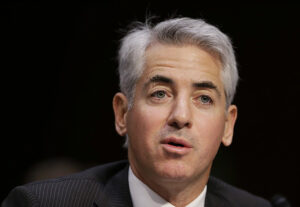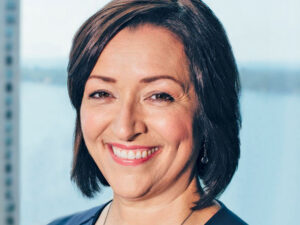At the end of November, I attended the public meeting of the Standing Committee of the Alberta Heritage Savings Trust Fund. Go here to access the transcript of the meeting on 30 November 2023. The previous year I attended the public meeting on 27 October 2022- transcript here. In 2022, I was the only member of the public personally in attendance with others accessing the meeting via phone or social media. This year, there were nine citizens who spent two hours of their time watching the committee and asking Alberta Investment Management Corporation (AIMCo) and Treasury Board and Finance (TGF) officials questions. In previous years, there was greater public interest with venues as large as the Italian Community Centre booked for larger numbers.
I sincerely hope that we will see more interest in the activities of the Legislative Assembly and its committees. Watching how are politicians work is critical to a vibrant democracy.
2023 Public Meeting
The first thirty minutes of the meeting was taken with prepared statements and a video on the Heritage Fund.from senior government and AIMCo officials.
The first questioner on Facebook queried – “How much would it have been if the past 45 years of government had allowed the original Lougheed plan instead of spending it? So, essentially, how big would it have been if we had kept the same pattern the entire 45 years?”
The response from the department was given by Ms. Jones
We don’t have a value and we will not put a value because there are so many assumptions that would go into that type of calculation. As you can see by the presentation and what Lowell has just said, considerable benefits have come back to Alberta from these types of investment. Unfortunately, we do not have a number to put on as to what the value of the fund would be because there are just too many moving parts and too many assumptions that we would have to put into that calculation (emphasis added).
More on this response below.
Much of the public questions related to the investment manager’s- currently AIMCo’s- policy on “socially responsible investment” (SRI) in the context of the Israeli-Gaza war. There are strands of “corporate social responsibility– (CSR which Wikipedia sees as a ” form of international private business self-regulation) which spawned ESG “Environment, Social, Governance” and “Socially Responsible Investing”. All these acronyms are on must-take professional courses for director and investment professionals’. These courses are typically offered in Canada by the Institute for Corporate Directors (ICD) which often partner with the executive education programs of business schools. The above terms also join Diversity, Equity and Inclusion (DEI) in the pantheon of current management ideas to address income inequality and climate heating. DEI has now become a favourite whipping post for conversative investors and culture wars.like hedge fund investor Bill Ackman.

Where the rubber hits the road are situations such as the war in Gaza which has generated considerable emotion throughout the world. War brings a range of investing issues to the forefront. Should investors in general, and AIMCo in particular, be holding investments in weapons manufacturing and services provided to the military?
From the standpoint of Irsa Khan, there was the burning question of AIMCo’s $200-million in companies that
“are actively profiting and participating in maintaining and facilitating the ongoing occupation of Palestine, and how we can go ahead and have peace knowing that our peace and our prosperity, opportunity for our future generations are being given to us through the slaughter of the prosperity, security, and opportunity of Palestinians and their future generations?” (p. HS-22)
AIMCo’s Chief Investment Officer (CIO), Dr. Marlene Puffer replied that events happening in Gaza
are not under our control, but we absolutely take seriously the points you raise. We operate with a global investment portfolio where we invest across the world in order to achieve diversification of the portfolio to benefit Albertans so that there is strong diversification across the asset classes according to the asset mix, that was mentioned earlier. We implement that through a very prudent approach. We operate according to our responsible investing policies and procedures. (p. HS-22)

Dr. Puffer went on to acknowledge that through “prudent diversification: –
The approach, you know, inevitably will mean that we have holdings in a wide variety of stocks and companies. The precise holdings that I think you’re referring to are in public markets, in companies that have a very diverse holding, some of which may be affecting what’s happening in that part of the world. (p. HS-22)
Ms. Khan pressed on noting that while AIMCo’s creation occurred much later (2008) than the state of Israel’s creation, in order to make a “make a prudent decision on whether or not it is socially responsible for us to be investing money. BDS has talked about the companies that you guys have invested in for years now.” (pp. HS 22-23)
Ms. Khan also brought up the damage done by Alberta governments to indigenous peoples. AIMCo responded through Suzanne Akers (Chief Risk Officer) who reminded her audience that over the long term for all Albertans observing “(W)e don’t have direct exposure to companies operating in that sphere,” (emphasis added) then contradicted herself by adding “(T)he exposure that we have, that has been discussed here, is very, very small, and it’s through companies like Microsoft.” (p. HS-23)

Tracy Parker then questioned AIMCo’s $8-million in investments in Chevron who “is the main international corporation extracting gas claimed by apartheid Israel in the east Mediterranean.” (p. HS-23) She also noted that one of AIMCo’s directors, Ken Kroner was a senior managing director at Blackrock one of the largest institutional investor in the world. (Dr. Kroner was appointed AIMCo’s chair on 8 December a week after the public meeting.)
Ms. Parker noted
BlackRock has been criticized for investing in the arms industry, the human rights violations in China, and the backing of Israel’s military. I just can’t imagine, you know, given that he is supportive of that investment strategy, that there will be an eye on ethical investing.
The retiring AIMCo chair, Mark Wiseman, like Kroner worked at Blackrock in a very senior capacity for several years after leaving the CEO position at the Canada Pension Plan Investment Board. Before leaving BlackRock he was Senior Managing Director at BlackRock, Global Head of Active Equities, Chairman of its alternatives business, and Chairman of BlackRock’s Global Investment Committee. He was also on BlackRock’s Global Executive Committee.
AIMCo’s response came via a friendly question from UCP member Taber-Warner M.L.A. Grant Hunter to allow AIMCo to explain their social investing philosophy.
Puffer unhelpful response follows:
On the social side, as an example, we pay close attention to the supply chain and the treatment of labour, et cetera. On the governance side, we pay close attention to diversity, equity, and inclusion type metrics. Those are examples of each category. In terms of, you know, political risk in related areas, it sometimes falls under the ESG category, sometimes falls under a broader category of risks that we examine. We endeavour to take a prudent approach that, as Suzanne and I both have articulated, balances the risk and reward. In some instances the involvement of various companies in certain aspects needs to be balanced against other aspects of how they are behaving (emphasis added). (p. HS-23).
The issue of AIMCo’s involvement in the Gazan war was returned to by Marija Cvetkovska who identified investments in Microsoft with an investment valued at $141,055,945
Microsoft has a history of deep engagement with the Israeli high-tech industry and close ties to the Israeli military. Over the years the company’s Israeli subsidiary, Microsoft Israel, has been providing services to the Israel government, the Israeli Ministry of Defense, and providing cloud services to the Israeli military and security bodies in Israel (HS-26)
AIMCo’s CIO referred the committee to a “detailed report on responsible investing,” adding AIMCo does not invest in tobacco companies and “companies considered to be manufacturers of nuclear weapons and other munitions and so forth. But, otherwise, all of our investments are considered responsible investing and sustainable investing considerations.” (HS-26)
AIMCo executives were either unwilling or unable to identify specific investments in their portfolios even though the investment manager must file detailed monthly 3-F reports with the Securities and Exchange Commission in Washington.These reports are available through EDGAR a electronic filing system operated for the SEC. AIMCo’s 14 November 2023 filing is here.
|
What is Form 13F? Institutional investment managers, including foreign entities, who have discretion over $100M or more in designated 13F securities must file a form 13F. The value of securities are set as the fair market value as of the last trading day of the month. |
The table below provides the market value some of AIMCo’s largest investments. The filing also gives details on the number of shares held as of the filing date, investment discretion that is whether the shares are held “solely” or jointly,whether voting rights are held solely or jointly,and the nature of the securities held- shares, convertibles, etc.
AIMCo holds shares and other securities in 1043 entities, mostly corporations worth U.S. $9.335- billion.
| Investee Company | U.S. $ amount |
| Alphabet
Amazon Apple BCE Bank of Montreal Bank of Nova Scotia Canadian Natural Resource Ltd. Cenovus Enbridge Meta Platforms Microsoft Pembina Pipelines Restaurant Brands Intl (Tims) Royal Bank of Canada Suncor, Inc. TC Energy T-D Bank VISA Nc. United Health Group Inc. EXXON-Mpbil Canadian Pacific Kansas City |
93,580,603
94,791,604 92,784,863 76,451,521 116,042,675 180,809,412 210,363,221 73,296,008 165,057,702 100,860,953 141,055n945 47,881,124 60,511,853 293,267,138 263,613,632 156,811,481 288,275,711 98,811,376 68,738,239 12,404,690
163,714,780 |
| Churchill Capital Corp.VII | 17,293,235 |
| Eli Lilly & Co | 29,427,741 |
| Lear Corp. | 49700165 |
| DoorDash | 13,324,258 |
| EQT Corp.- notes | 56,510,550 |
| General Electric | 2,697,420 |
| JP Morgan Chase | 11,036,022 |
| Franco Nevada Corp. | 58,661,730 |
Returns, Efficiency, Transparency
Brad Fisher followed with a series of questions about AIMCo’s view on its relatively poor returns on the Heritage Fund. Ms. Jones, Executive Director at TBF dodged the question by going back to general principles about “return objectives,” “globally diversified,” “prudent risk-taking,” ”asset strategies,” concluding that “small changes have been made to “position the portfolio accordingly.”
Frank Hanus asked about how efficient AIMCo was at managing the Heritage Fund in relation to the performance of other like funds. The CIO said that comparisons are essentially not possible. However, she added AIMCo relied on CEM, an “independent cost benchmarking provider, “ which has found “that among our peers on a five-year average AIMCo is below that benchmark cost by about 15 ‘s basis points.” (p. HS-25). CEM is paid for by AIMCo’s mainly pension fund clients.
Difficulty of calculating worth of Heritage Fund.
In my questions of officials, I took aim at the reluctance of TBF officials to provide the committee with an estimate of what the Heritage Fund would be worth assuming the original formula of the Heritage Fund was followed to the present day.
I observed that a lack of Heritage Fund investment disclosure compared to larger sovereign wealth funds such as the Norwegian pension plan. I suggested that the committee recommend to the government fuller disclosure.
On the matter of TBF officials refusing to provide an estimate on what would be the current worth of the Heritage Fund if the original formula was followed, I suggested officials were being disingenuous hiding behind a claim of too many variables. At the end of this post, I show a simple spreadsheet sent to committee members after the meeting estimating the Heritage Fund would be worth about $580-billion today..
Key Takeaways
There’s a deep concern in this room, as you can tell, about investments that are being made by AIMCo on behalf of the heritage fund. I guess the question is really to you as the chair. Will you be willing to take this back to the Minister of Finance and ask him to personally examine, with his officials, to get more clarity with respect to where these monies are going? There’s no doubt that the actions of corporate entities are complicit with certain state governments and that this has very dire consequences on people’s lives, and I would humbly submit that this is a very important, pressing issue. It’s not eco fascism that we’re talking about here. It is a matter, literally, of life and death.
Institutional investors have enormous power globally through their choices of investment. What they’ve been saying over the past 10 years with ESG is that everything is good. We have all of these rules and systems, but I think a lot of academics and a lot of investigative journalists are quickly coming to the conclusion that that is not the case and that ESG is more greenwashing than anything else.
Again, with respect, I hope the committee has listened to the people that have made the presentations here tonight and will take that back to the minister. (HS-27)
Estimate of Heritage Fund’s worth
On December I sent the following email and attachment to the all M.L.A.s sitting on the Select Standing Committee.
| Gentlemen- As you know I attended the AHSTF Committee’s public meeting a few weeks ago. I was dismayed at the failure of officials to answer a very simple question about what the Heritage Fund’s value would be today if the original deposit and savings rules had remained in place. I saw no reason that this should be a particularly difficult exercise to report back to the Committee.
Officials suggested there were too many variables to consider in formulating an answer. I indicated that this type of calculation was relatively easy to formulate based on the historical record. For your information I have attached a spreadsheet which estimates what the Heritage Fund would be worth today under the following simplifying assumptions.
The bottom line is the Heritage Fund’s value would be close to $600-billion today if the government of the day had stuck to its original plan. That said, the government of the day would be faced with difficult choices as to whether to cut spending or raise taxes or both. Past governments have chosen to maintain services and cut taxes. However, the problem as Premier Smith wrote in an essay for the University of Calgary’s School of Public Policy (a copy of the paper is attached) before running for the UCP leadership was not the lack of economic diversification but the lack of fiscal diversification away from non-renewable resource revenue. If you have further questions I would be pleased to respond.
Kind regards
Bob Robert L. (Bob) Ascah, Ph.D. Research Fellow, The Parkland Institute |
To date I have had one reply to my email from the M.L.A. for Sherwood Park Kyle Kasawski.
The full file of investments can be found here.AIMCo investments 3rd quarter 2023
Related Posts
Can AIMCo be Fixed? (2)- Kenney redefines the pension bargain
Heritage Fund loses lustre- Time to rethink its existence-Analysis and Opinion